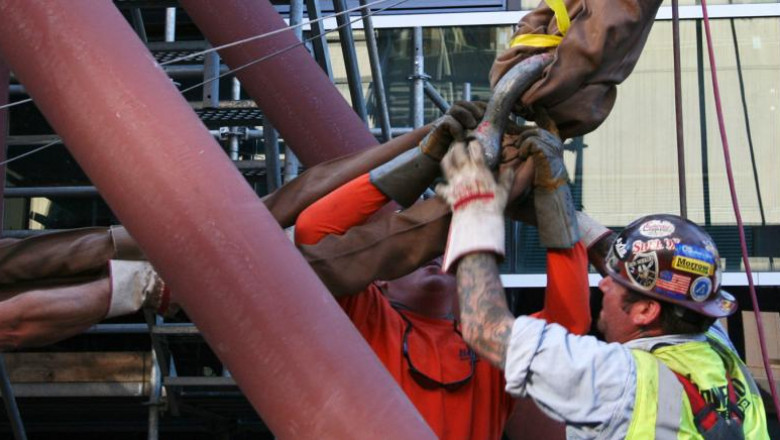views
Essential Tools for Riggers: A Comprehensive Guide
Riggers play a crucial role in industries such as construction, shipping, and entertainment, where heavy loads must be moved or suspended with precision and safety. Their work requires specialized tools that enable them to handle various tasks efficiently while minimizing risks. Below, we delve into the key tools that every rigger needs to perform their job effectively.
1. Slings
Slings are indispensable for riggers as they secure loads for lifting. They come in various types, including wire rope slings, chain slings, and synthetic web slings. Each type has its specific application based on the weight and nature of the load. Synthetic slings are lightweight and ideal for delicate loads, while wire rope and chain slings are more robust, suitable for heavier objects.
2. Shackles
Shackles are essential connectors that allow riggers to attach slings, hooks, and other rigging components. They come in different shapes, such as bow and D-shackles, and are available in varying load capacities. Rigorous inspection of shackles is vital to ensure they can handle the required weight safely.
3. Hoists and Winches
Riggers frequently use hoists and winches to lift and move heavy loads vertically or horizontally. Hoists are powered manually, electrically, or pneumatically and are used to lift loads directly. Winches, on the other hand, are designed for horizontal pulling tasks. Selecting the appropriate hoist or winch depends on the specific requirements of the job.
4. Pulleys and Blocks
Pulleys and blocks are mechanical devices that reduce the effort needed to lift heavy objects. By redirecting the direction of force and distributing weight, they make rigging operations more manageable. Riggers use these tools in combination with ropes or cables to create efficient lifting systems.
5. Hooks
Hooks are fundamental components in rigging. From slip hooks to grab hooks, riggers rely on various types to secure loads effectively. Safety is paramount, and hooks are often equipped with latches to prevent accidental detachment of loads during lifting.
6. Load Binders
Load binders, or chain tensioners, are essential for securing loads during transport. They are used to tighten chains and keep cargo stable. Two common types are ratchet binders and lever binders, both designed for different levels of tensioning and ease of use.
7. Measuring Tools
Precision is key in rigging, making measuring tools like tape measures, load indicators, and angle finders indispensable. These tools help riggers calculate load dimensions, weight, and angles to ensure safe and accurate operations.
8. Personal Protective Equipment (PPE)
Riggers work in environments with significant hazards, so PPE is non-negotiable. Helmets, gloves, safety glasses, and steel-toed boots are essential to protect against potential injuries. High-visibility clothing is also crucial for working in busy or dimly lit areas.
9. Inspection and Maintenance Tools
Regular inspection of rigging equipment is essential to maintain safety. Riggers use tools like calipers, magnifying glasses, and ultrasonic testers to check for wear, corrosion, or structural defects in their equipment.
Conclusion
Riggers require a diverse set of tools to execute their tasks safely and effectively. Each tool serves a specific purpose, from lifting and moving loads to ensuring precision and safety. Equipping riggers with the right tools and training is critical to ensuring smooth and secure rigging operations.






















Comments
0 comment